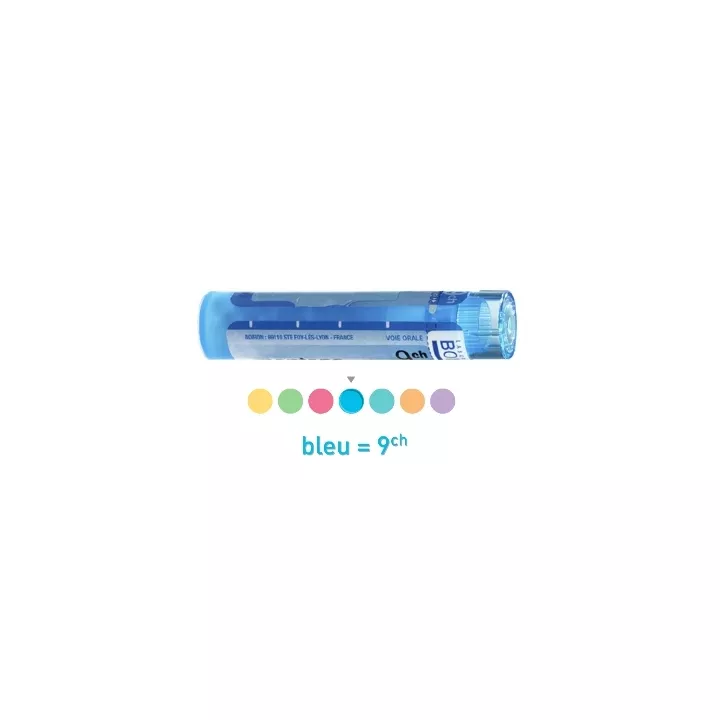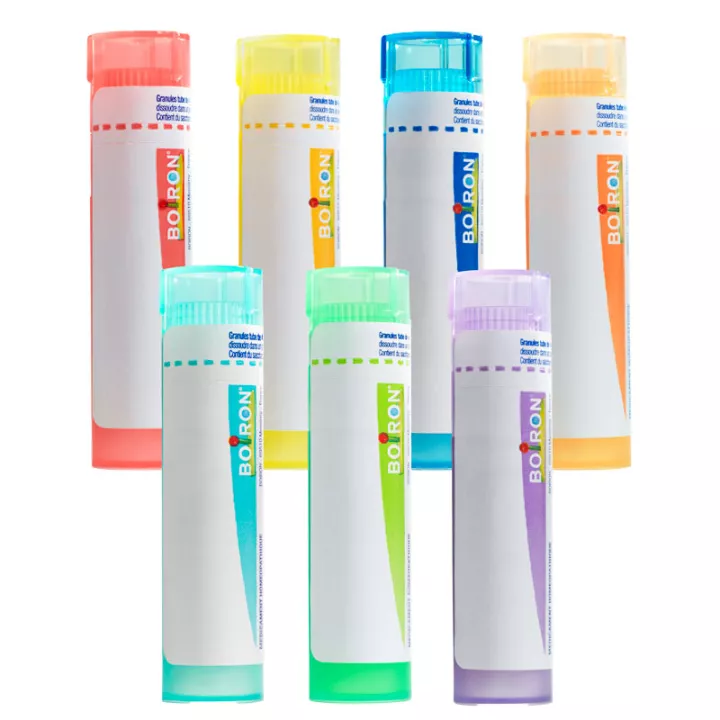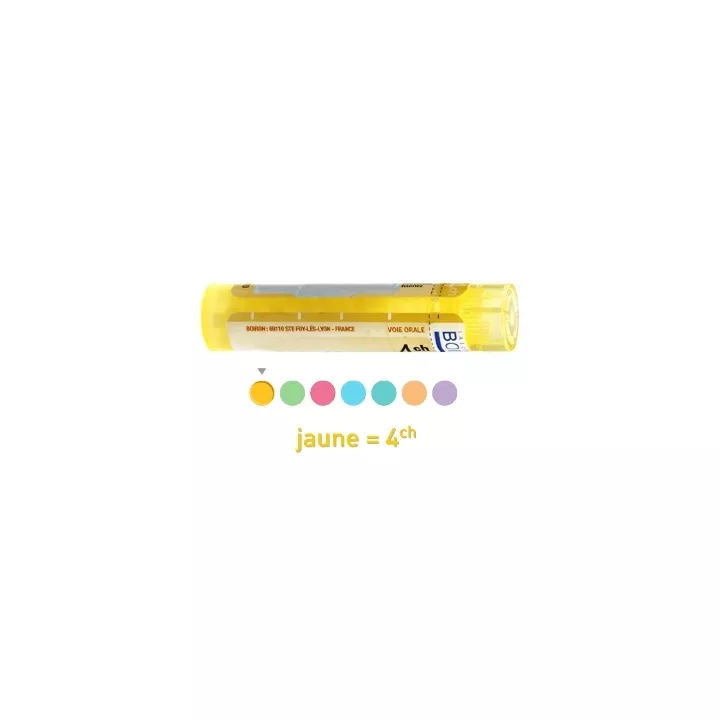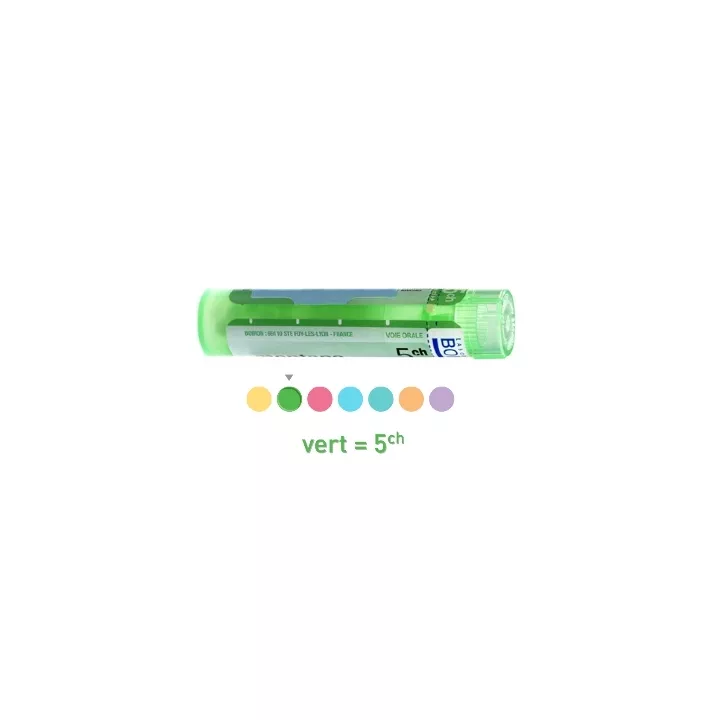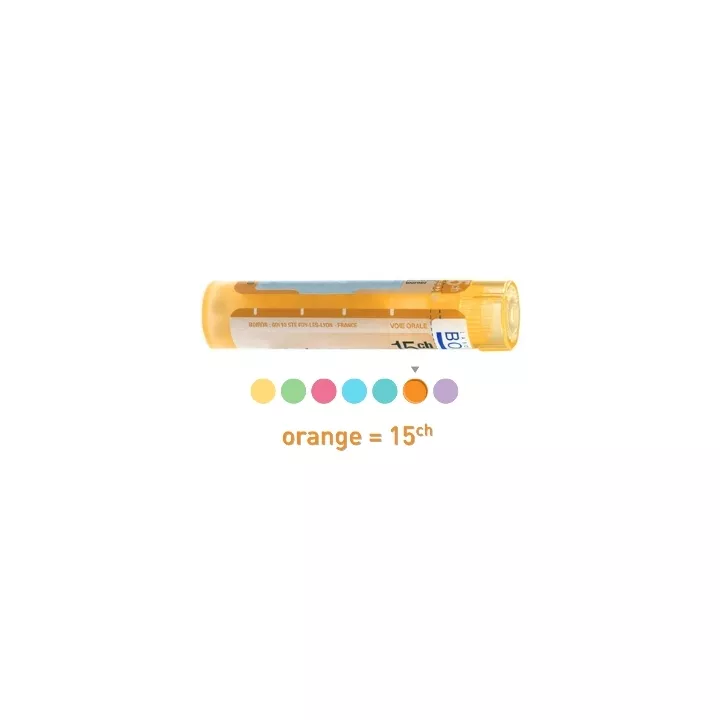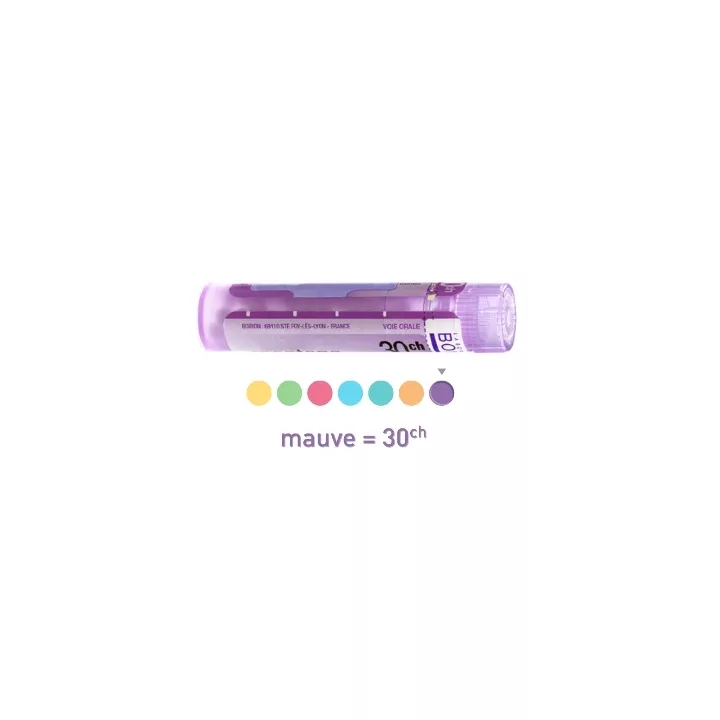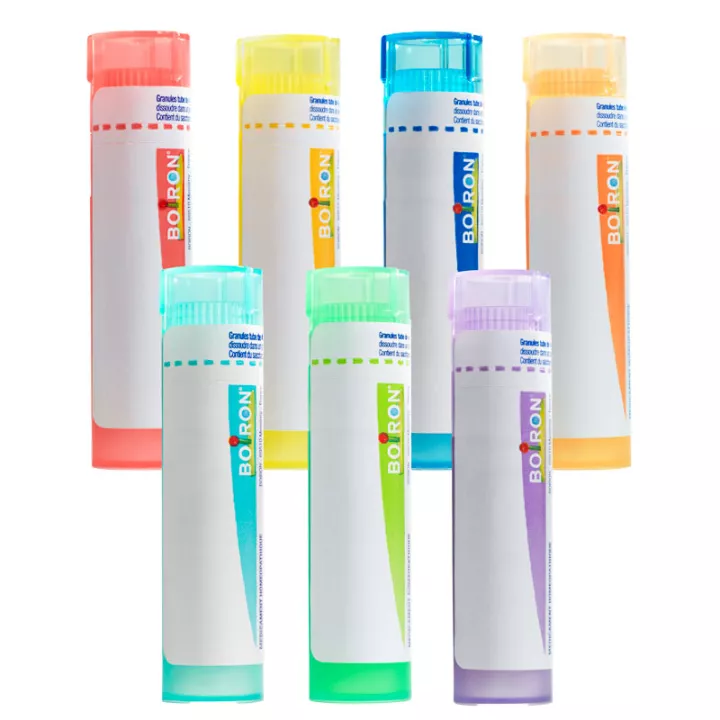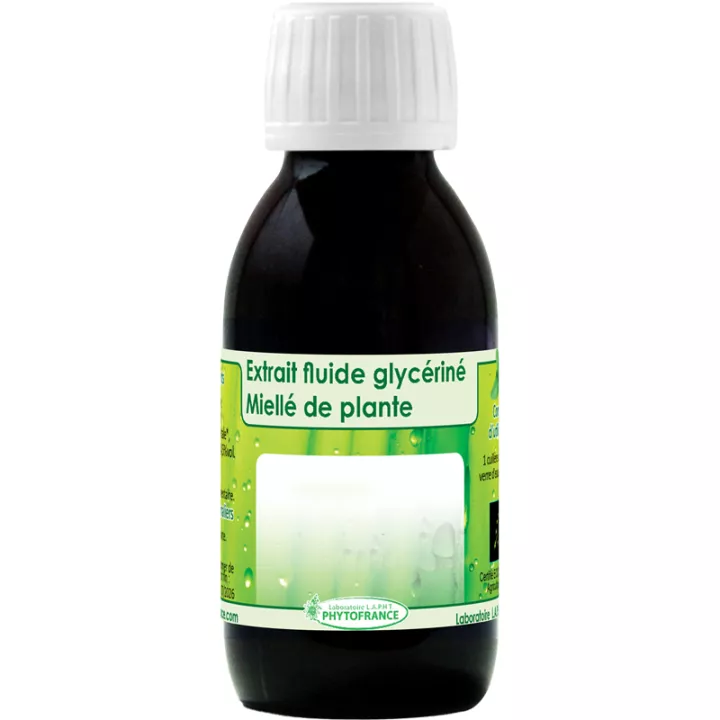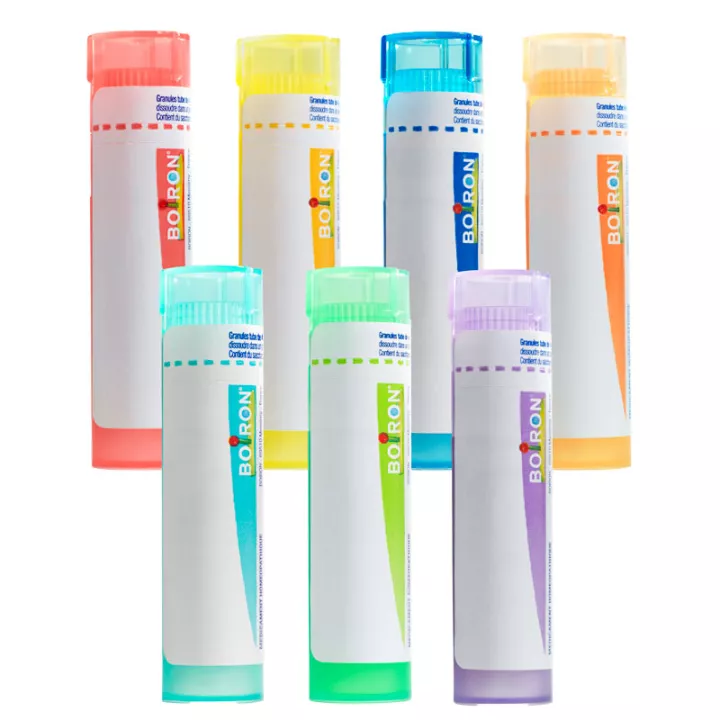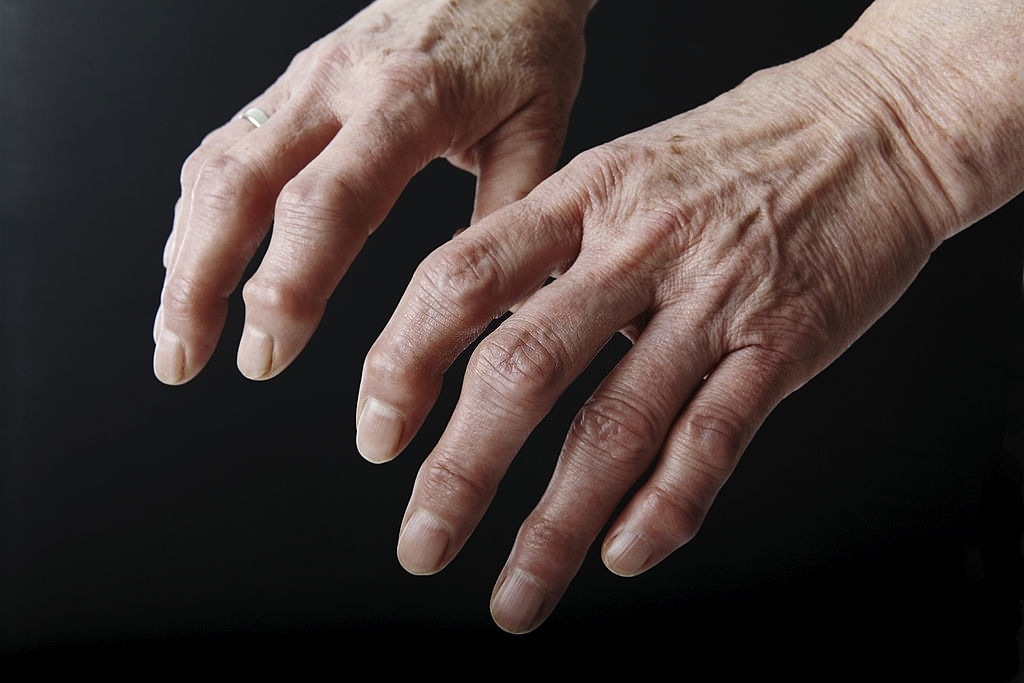Rhododendron Chrysanthum : Homeopathic Solution for Rheumatic and Arthritic Pain
Rhododendron chrysanthum 4CH, 5CH, 7CH, 9CH, 15CH, 30CH, 200K, 1000K granules or homeopathic doses Boiron
Authorized drug: EH01982
Origin : Vegetal
Available from TM to 30 CH
Available in Korsakovian dilutions of 200K, 1,000K, 10,000K
In the field of homeopathy, Rhododendron Chrysanthum stands out as a leading remedy for the treatment of pain associated with rheumatism and osteoarthritis. This remedy is particularly effective in soothing pain in small joints, which tends to spread to neighboring joints, exacerbating the patient's discomfort.
Therapeutic properties and indications
Rhododendron Chrysanthum is renowned for its targeted action on joint pain, offering significant relief to rheumatism sufferers. It is a homeopathic remedy prepared from the leaves and flower buds of the shrub of the same name, native to Asia. This natural composition gives Rhododendron Chrysanthum unique properties, making it a preferred choice for patients seeking natural alternatives to manage their rheumatic symptoms.
In rheumatology, Rhododendron Chrysanthum's efficacy also extends to the relief of nerve pain, a notable advantage for those struggling with painful nerve-related conditions. Health professionals use this remedy to treat a variety of rheumatic manifestations, underlining its versatile role in pain relief.
Dilution and administration
Treatment with Rhododendron Chrysanthum is tailored to the intensity and specificity of the patient's symptoms. Commonly used dilutions range from 4 CH to 7 CH, allowing treatment to be tailored to individual needs. This flexibility in the choice of dilution ensures a precise therapeutic approach, maximizing the benefits of the remedy while minimizing the risk of adverse effects.
Rhododendron Chrysanthum offers a natural therapeutic solution for people suffering from joint pain sensitive to climatic changes and weather-related disorders. Its availability in various formulations and dilutions ensures a tailor-made approach, highlighting homeopathy's commitment to providing holistic, personalized care in harmony with each patient's unique needs.
Indications and dosage
Homeopathic medicines can be used for a variety of symptoms, so it is not possible to determine the indications and dosage of a specific preparation.
The homeopathic physician selects the appropriate medicine, dilution and dosage according to the patient's state of health and characteristic symptoms.
Combat Rheumatism and Neuralgia with Rhododendron chrysanthum 9CH
The Homeopathic Solution for Healthy Joints
If you suffer from rheumatism, arthralgia, osteoarthritis or neuralgia, Rhododendron chrysanthum 9CH is the natural remedy you've been waiting for. This homeopathic medicine is specially formulated to relieve these ailments and restore your well-being.
Why choose Rhododendron chrysanthum 9CH for your rheumatological and neurological problems?
- Natural relief: Rhododendron chrysanthum 9CH offers a gentle, natural solution for rheumatological and neurological problems. No more heavy medication and its side effects.
- Freedom of movement: Rheumatism, arthralgia and osteoarthritis can make it difficult to move. Rhododendron chrysanthum 9CH helps you regain your freedom of movement.
- Comfort in all seasons: Symptoms often worsen in stormy weather, winter or spring. Rhododendron chrysanthum 9CH gives you constant relief, whatever the season.
- Combat Neuralgia: Weather-related neuralgia is particularly unpleasant. Rhododendron chrysanthum 9CH helps soothe them and improve your quality of life.
A Natural Solution for Rheumatic Conditions
Rhododendron Chrysanthum, offered by Boiron, is a homeopathic medicine primarily indicated for the relief of pain associated with rheumatism, arthralgia and osteoarthritis. By targeting symptoms aggravated by changing climatic conditions, this remedy offers effective support to improve the quality of life of people affected by these disorders.
Relief of Neuralgia Sensitive to Weather Changes
In the field of neurology, Rhododendron Chrysanthum stands out for its beneficial action on certain neuralgias, particularly those exacerbated by stormy weather. This homeopathic treatment helps reduce the intensity of neuralgic pain, enabling patients to regain greater comfort and peace of mind.
Directions for use for best results
For rheumatic and neuralgic conditions, we recommend taking 5 granules of Rhododendron Chrysanthum in the appropriate dilution (4CH, 5CH, 7CH, 9CH, 15CH, 30CH), as required or as advised by a health professional. Ideally, take between meals for optimal absorption.
Directions for use
Do not touch homeopathic granules with your fingers.
Use a mint-free toothpaste (such as Homéodent Boiron, which is compatible with homeopathic granules).
How long does it take to see an improvement with Rhododendron Chrysanthum?
Improvement in symptoms may vary according to the individual and the severity of the condition. Regular use as directed can lead to improvement after several days or weeks.
Are there any side effects to using Rhododendron Chrysanthum?
Rhododendron Chrysanthum is well tolerated and side effects are rare in homeopathy. If you experience any unusual symptoms, it's important to consult a healthcare professional.
Can Rhododendron Chrysanthum be used in conjunction with other treatments?
Yes, Rhododendron Chrysanthum can be taken as an adjunct to other medical treatments or therapies. However, it is prudent to discuss any combination of treatments with a healthcare professional.
Is Rhododendron Chrysanthum suitable for all ages?
Rhododendron Chrysanthum can be used by people of different ages. Consultation with a healthcare professional is recommended to determine the appropriate dosage, especially for children and the elderly.
Rhododendron Chrysanthum Dosage Protocol: Relief of Rheumatism and Neuralgia
Rhododendron Chrysanthum is the homeopathic remedy of choice for the treatment of rheumatism and neuralgia. Its correct use, adapted to the specific symptoms and their intensity, is essential to optimize its efficacy. Here's a detailed guide to recommended dosages for these conditions.
Rheumatic pain relief
For individuals suffering from rheumatism, the standard dosage is 5 granules of Rhododendron chrysanthum 6 CH, administered three times a day. This formulation is particularly suitable for classic rheumatic pain, offering lasting relief throughout the day.
In cases where rheumatic pain is intensified by cold weather, a dosage adjustment is recommended. It is then suggested to opt for 4 CH, a dilution favoring more targeted action against the aggravating effects of cold on joint pain.
Forosteoarthritis attacks, which may occur periodically, the adjusted dosage is 3 granules of Rhododendron chrysanthum 5 CH, also to be taken three times a day. This concentration specifically targets the symptoms of osteoarthritis, attenuating attacks and contributing to improved joint comfort.
Managing neuralgia
Neuralgia, particularly when exacerbated by stormy conditions, requires special attention. Rhododendron chrysanthum 7 CH, 5 granules three times a day, is recommended for this type of pain. This dosage is crucial to effectively alleviate neuralgic pain and should be followed rigorously until symptoms improve.
Stopping treatment
It is important to note that treatment with Rhododendron chrysanthum should be discontinued as soon as the pain disappears. This approach not only ensures relief of symptoms, but also prevents excessive use of the remedy.
Treatment and associated pathologies
Rhododendron chrysanthum is linked to the treatment of various pathologies, notablyarthralgia and neuralgia. Its spectrum of action, from the management of joint pain to nervous disorders, underlines its versatile role in the homeopathic pharmacopoeia.
Packaging and contents
Rhododendron Chrysanthum, derived from the golden rhododendron, is a plant used in homeopathy to relieve joint pain exacerbated by climatic changes and to treat disorders linked to meteorosensitivity. Registered under number EH01982, this plant-based medicine is available in doses, tubes and magistral preparations, including Korsakovian dilutions, offering a range of dilutions for personalized therapeutic application.
Origin and properties
Golden Rhododendron is traditionally recognized for its anti-inflammatory and analgesic effects. In homeopathy, Rhododendron Chrysanthum is prepared from the whole plant, in flower, to harness its therapeutic benefits without causing side effects.
Available formulations
Doses and tubes: The remedy is available in several potencies, with doses from 7 CH to 30 CH and tubes from 4 CH to 30 CH. These different dilutions can be adapted to suit the intensity of symptoms and individual sensitivity.
Magistral preparations: For more precise customization, Rhododendron Chrysanthum can also be prepared in Hahnemannian dilutions from 4 CH and in Korsakovian dilutions (200K, 1,000K, 10,000K). This option underlines the importance of the individualized approach in homeopathy.
Therapeutic applications
Rhododendron Chrysanthum is often recommended for
- Joint pain, especially that which worsens with weather changes or before storms, helping to relieve discomfort and improve mobility.
- Meteorosensitive disorders, by helping to reduce the body's reactions to climatic variations.
- Rheumatism and arthritis, by helping to reduce the inflammation and pain associated with these conditions.
Discover Rhododendron chrysanthum 9CH, the natural homeopathic remedy for effective relief of rheumatism, neuralgia and joint problems. Restore your well-being in all seasons!
Precautions for use
Warning
Contains sacchararose.
Giving homeopathic granules to babies and children
For granules or alcoholic drops, dissolve in 100ml of water. As granules take a long time to dissolve, it is necessary to prepare your mixture in advance.
Homeopathy and pregnancy
Homeopathic medicines have no chemical toxicity, no contraindications, no interaction with other drugs, and no adverse effects linked to the quantity of product ingested. Pregnant women can use homeopathic remedies without any known risk to themselves or their unborn child, but it is advisable to seek advice.
Frequency of homeopathic use
For acute conditions, homeopathic remedies should be taken every hour until symptoms improve. From then on, they should be taken 3 or 4 times a day, spaced out, and then gradually stopped.
For chronic conditions, low-dilution remedies (> 9CH) should be taken 1 or 2 times a day, while basic remedies should be taken once a week, or even once a month. This decision is left to the homeopath.
What to do if there is no improvement within 24 hours
Certain pathologies cannot be treated with homeopathy simply by self-medication. Their seriousness requires medical advice, which can be given by a homeopathic doctor. This doctor will judge whether your condition can be treated with homeopathy alone, or whether your treatment needs to be supplemented with allopathic medicine.

